Situated in a place shaded by ancient trees, Kom Pong Chray Pagoda (also known as Hang Pagoda) is known not only as one of the most beautiful ancient pagodas in Tra Vinh Province but also as a place where wood carving is taught to children of the Khmer ethnic people in southwest Vietnam.
Hang Pagoda was built in Chau Thanh Town, Chau Thanh District in 1637. It is considered “a special vocational training school” by Tra Vinh residents. In 2002, when the main chamber of the pagoda was rebuilt, artisan Thach Buol in Dong Thanh Commune, Binh Minh District of Vinh Long Province was invited to design the patterns and produce some sculpture for decorative purposes. Seeing the beautiful wooden sculptures made by artisan Thach Buol, venerable monk Thach Suong invited him to stay in the pagoda to teach sculpture to young monks. The first class at the pagoda was attended by four young monks. After two years of apprenticeship, these monks became skilled at the work. Gradually, they taught the craft to new students.
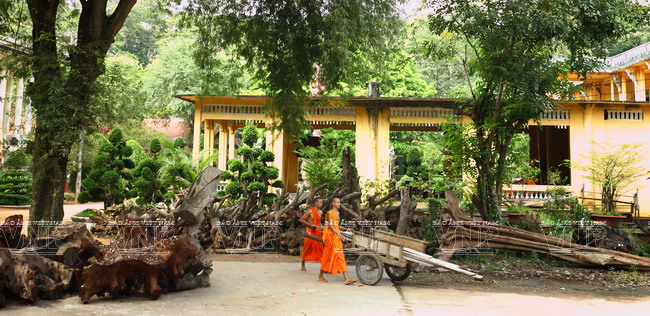
Kom Pong Chray Pagoda is well-known for its teaching of wood carving
for children of the Khmer people. Photo: Nguyen Luan/VNP
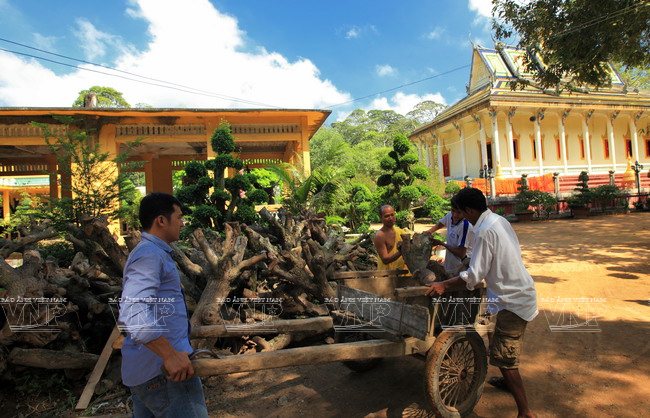
The craft of wood carving has existed for more than 12 years. Photo: Nguyen Luan/VNP
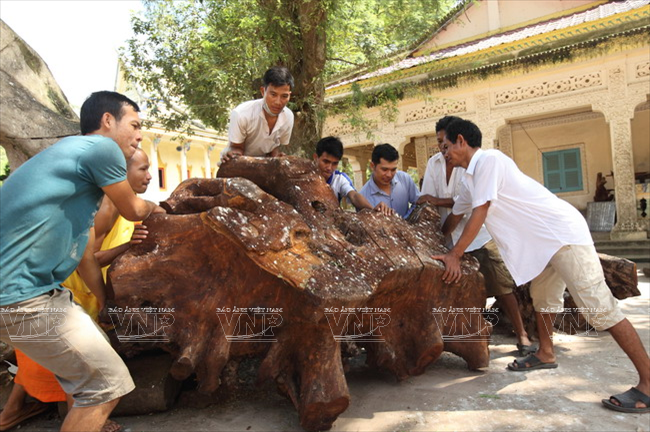
The artisans at Hang Pagoda have turned the stumps of trees into unique artworks. Photo: Nguyen Luan/VNP
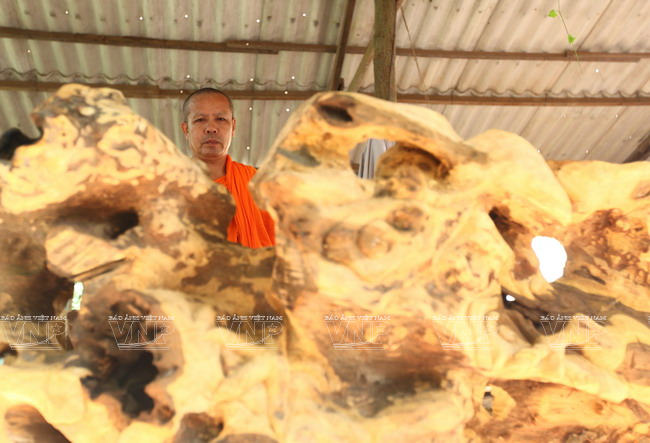
Based on the natural shapes of the stumps, the artisans at Hang Pagoda create different artworks.
Photo: Nguyen Luan/VNP
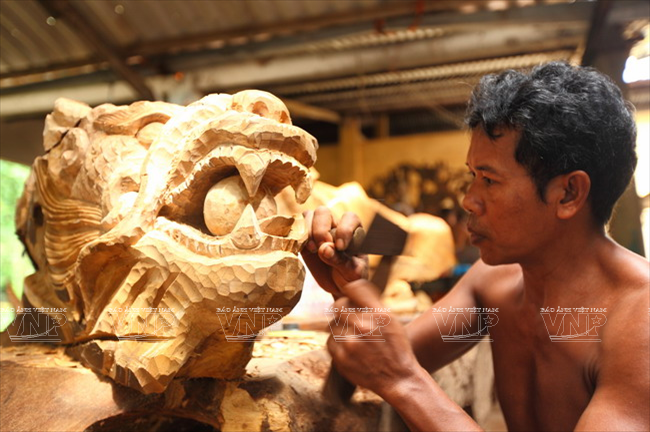
All processing steps are done by hand. Photo: Nguyen Luan/VNP

A monk at Hang Pagoda carves a big peacock. Photo: Nguyen Luan/VNP
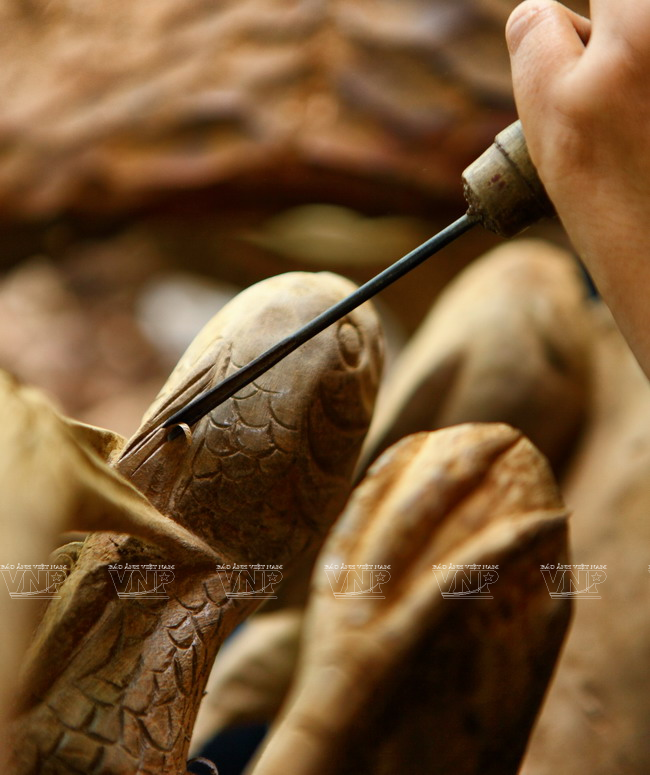
The sculpture requires the meticulousness, thoroughness and skillful hands of the artisans. Photo: Nguyen Luan/VNP
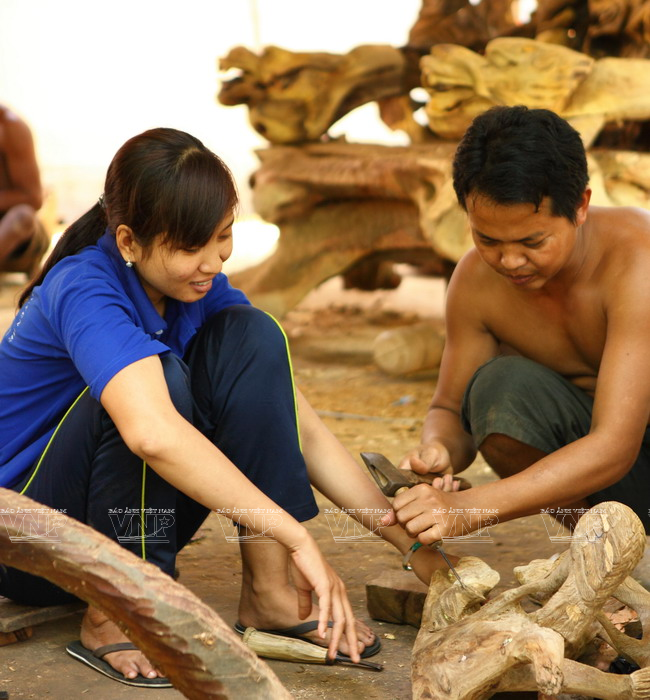
The craft is taught by one person to another. Photo: Nguyen Luan/VNP

So far, over 60 Khmer young people have been taught the craft. Photo: Nguyen Luan/VNP
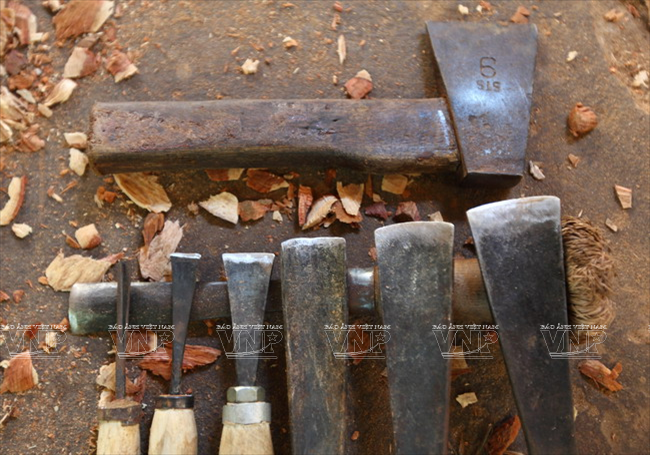
Simple tools of the artisans at Hang Pagoda. Photo: Nguyen Luan/VNP |
The vocational training school of Hang Pagoda was well-known throughout the region, attracting an increasing number of monks, nuns and Khmer young people in the province to the school to learn the craft. The fame became widespread and children of Buddhist followers from the provinces of An Giang, Soc Trang, Vinh Long, Can Tho and Kien Giang also came to Hang Pagoda to learn sculpture. So far, over 60 Khmer young people have been taught the craft. Thi So My, born in 1990, who studied the craft for two months, said: “Although I am a girl, I like learning this craft very much, because seeing the work I create with my own hands makes me hope to become a wood sculpture artisan.”
Monk Thach Suong, verger of Hang Pagoda, said: “Traditional wooden sculpture is full of the Khmer culture, so it should be taught for preservation and promotion. Moreover, this job brings a steady income, enabling the Khmer young people to earn their living when they return to the secular life.”
Through the skillful hands of the artisans at Hang Pagoda, the stumps which seem wasted become artwork. Many sculptures, such as dragons, lions, tortoises, phoenix, animals, birds and items describing the life and production activities of the Khmer people in the South are displayed at the main chamber, residence, living room and study room of the pagoda.
In 2005, monk Thach Suong established the Hang Pagoda’s Sculpture Club with over 10 members who were monks with high professional skills. So far, the club has produced more than 1,000 artworks ordered by visitors. Good news spread and the club’s artworks have quickly become sought after by domestic and foreign visitors. In particular, there was an item worth hundreds of millions of dong ordered by a Cambodian customer. One of the most famous, unique and spectacular works of the club which attracts a great number of people to see when they visit Tra Vinh is “Nine dragons struggle for the gem”, size 3.5m x 3.5m. It is made from the roots of nine ancient trees.
Wood carving has not only helped many young Khmer people build a better life, but also contributed to preserving a traditional value. That’s why Hang Pagoda is now an interesting destination for visitors to Tra Vinh.
Some wooden sculptures by the artisans at Hang Pagoda
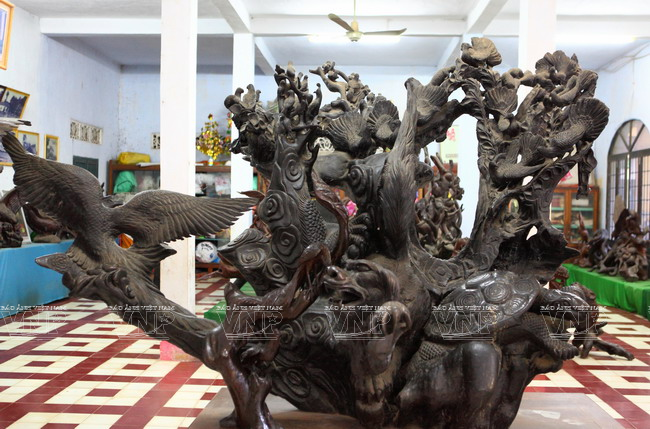

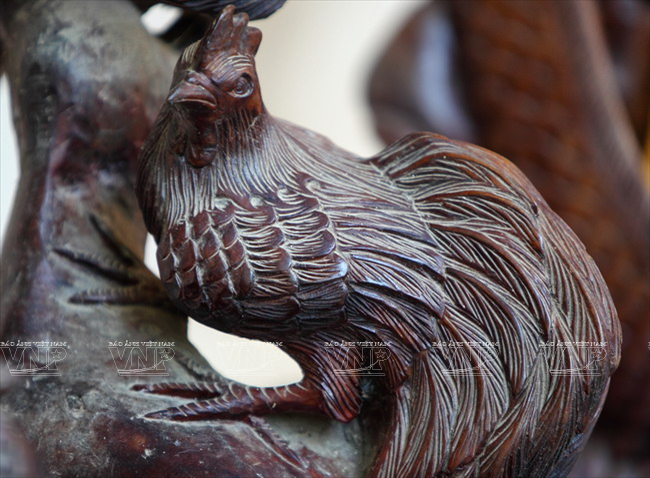
 |
Story: Nguyen Oanh - Photos: Nguyen Luan